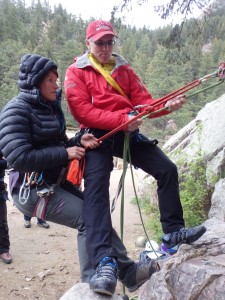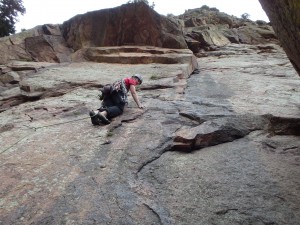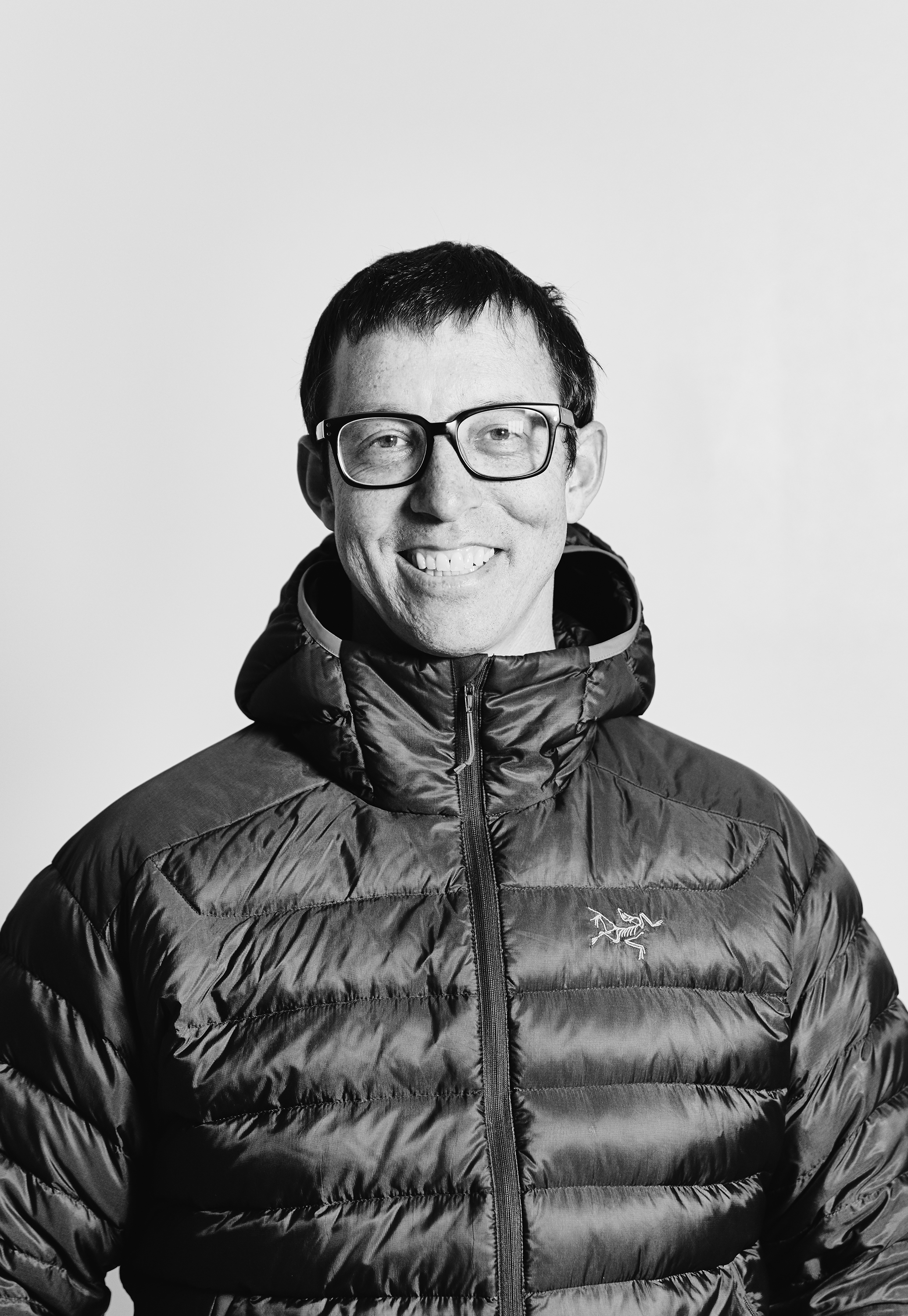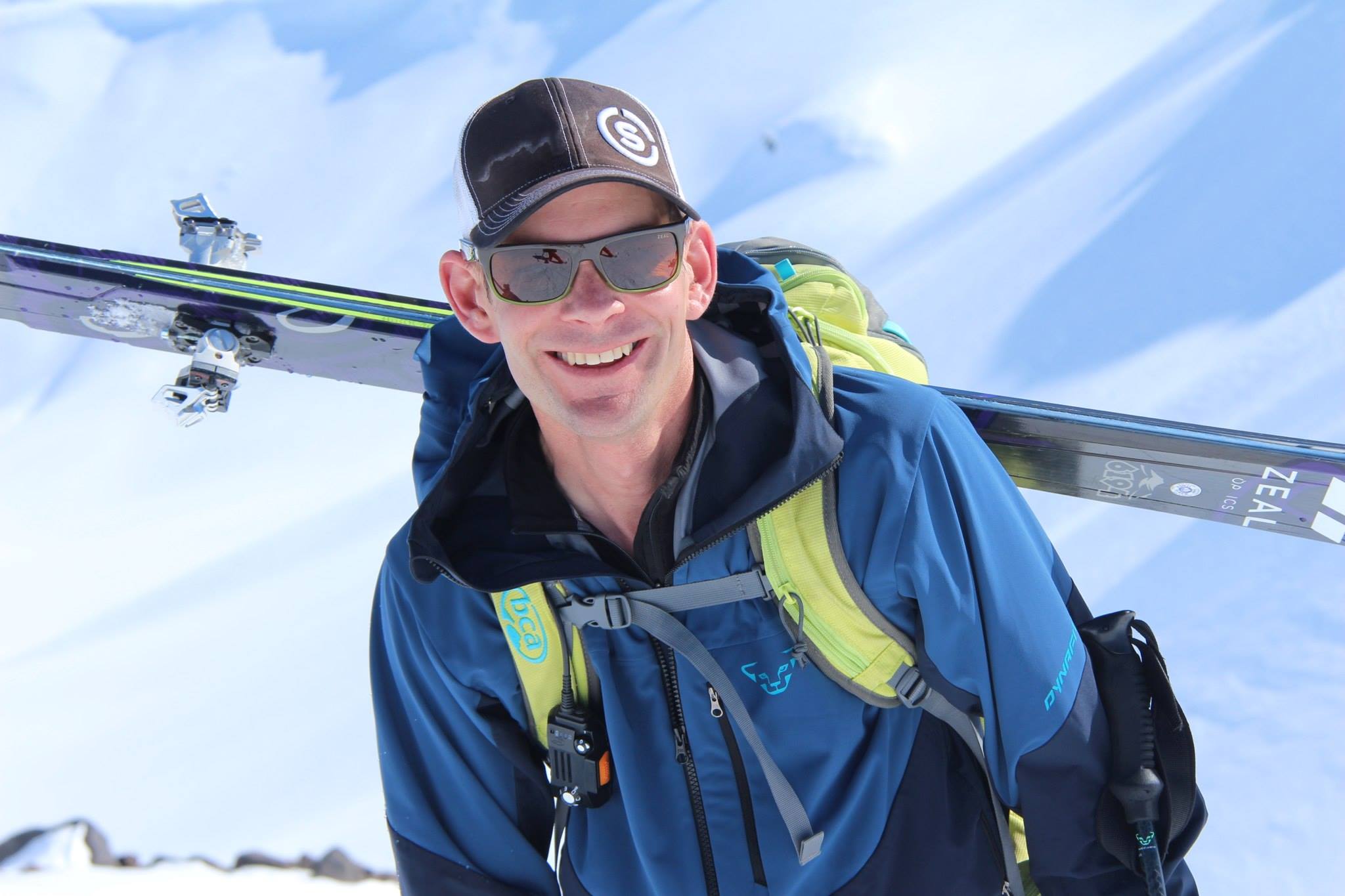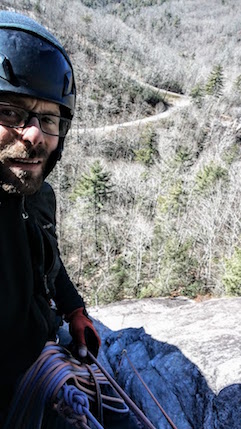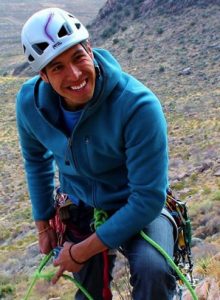Jaclyn Kuusinen, Recipient of the 2015 Patagonia Scholarship
Reflections from an AMGA Rock Guide Course

Jaclyn Kuusinen, recipient of the 2015 Patagonia Scholarship, on her Rock Guide Course, Boulder, Colorado. Photo: Jaclyn Kuusinen Collection
Teaching and guiding rock climbing comprise the most rewarding career I can imagine. Technical rock climbing is the most interesting, challenging, and engaging activity I’ve ever encountered, and sharing my passion with others brings me great joy, and hopefully enriches the lives of those who choose to climb with me. The many lessons that climbing can teach us—you have to trust your partner, communication is essential, overcoming self-doubt builds confidence in your skills and abilities, and you can’t control the weather but you can control your attitude—can transfer into other areas of our lives and become metaphors for how we choose to live in the world.
The education I’ve received from the American Mountain Guides Association (AMGA) has created a framework from which I am able to provide high-quality climbing experiences. I started guiding in 2005 and took my first AMGA course in 2007. Throughout my career, I’ve guided glacier trekking, ice climbing, backpacking, and rock climbing across Alaska, Utah, and Colorado, and I currently teach for the Colorado Mountain College Outdoor Education program in Steamboat Springs, Colorado. The AMGA has supported my guiding career by providing excellent practices to minimize risk and ensure that I’m employing and teaching the most current techniques.
Thanks to a generous scholarship from Patagonia, I was recently able to take an AMGA Rock Guide Course (RGC) in Boulder, Colorado. The opportunity to take this course meant that I had direct access to four of the best instructors in the field for 10 days of clinics and hands-on practice, not to mention a pool of 11 other students with a depth of experience of their own.
The first day of the course required me to make a major paradigm shift from the Single Pitch Instructor (SPI) mindset I had been in for the past eight years. For anyone who is transitioning from an SPI certification into the Rock Guide Course, I hope to shed light on one significant difference between curriculums. To put it simply: Things often heard on an SPI course include: “We always do it this way,” and, “We never do that.” But, things almost never heard on a RGC include: “We always do it this way,” and, “We never do that.” Things more commonly heard on a RGC are: “How you set this up depends…who is your client? What is their skill level? How are they doing at this point in the day? What is the terrain? Where are you going next? Os the weather moving in?” Etc.
There is a straightforward reason for this fundamental difference between the courses. The terrain in multipitch climbing is more complex, and therefore requires more complex decision-making as well as a greater degree of flexibility. Once I realized this simple yet important difference, I began to enjoy the challenge of setting up the most efficient, tidy, and safe stations and transitions on multi-pitch anchors. We analyzed every anchor with our instructor-and-student team and discussed ways to improve each location, where best to station clients, how to manage ropes effectively, etc. We became keenly aware of which systems we default to, and then took the time necessary to practice and become familiar with techniques that worked better in certain situations, which we were sometimes employing for the first time. The more complex terrain in multipitch guiding requires more flexibility as well as more creativity. I was continually impressed by the simple and elegant solutions our instructors provided for issues that arise when guiding in complex terrain.
On May 19, which was the seventh day of our 10-day course, the Boulder Daily Camera wrote that this May is already the wettest May in 20 years. Needless to say, although we maximized every weather window, our ability to spend time on rock was limited. The upside to those challenges is that we were able to cover the curriculum to an unusual depth. The downside is that we had less hands-on practice than any of us would have liked. Because of the less-than-ideal weather, our challenge now that the course is complete is to practice, practice, practice the techniques we learned both on the ground and in the vertical environment. Realistically, this is the case with any course, though: When the lessons end, our practical application of techniques learned and fine-tuning of our stylistic preferences has only just begun.
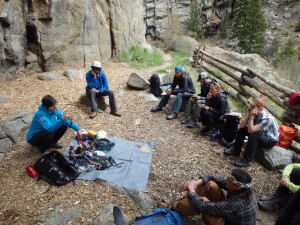
Angela Hawse showing a guide’s pack’s contents, Castle Rock, Boulder Canyon, Colorado. Photo: Jaclyn Kuusinen
The weather became progressively worse in the last few days of the course. I deeply admire the instructors and my fellow students for bringing their most positive and professional attitudes. This meant that despite the debilitating weather conditions, we were able to maximize our learning until the end.
Some of the broad-stroke takeaways from this course are: The best techniques to use in the multi-pitch guiding environment depend upon a complex decision matrix and require flexibility and creativity; when the course ends your education has only just begun; and you still can’t control the weather, but the attitude you choose to bring affects not only your experience but the experience of those around you.
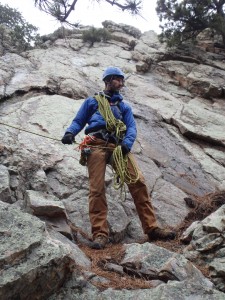
Scott Sinor looking “guidely” at the Quartzite Ridge, Eldorado Canyon, Colorado. Photo: Jaclyn Kuusinen
My education with the AMGA inspires me to continue to grow as a professional and improve as a guide. I am deeply grateful to Patagonia for providing me with the opportunity to further refine my skills to teach climbing through their generous scholarship. It’s truly incredible that Patagonia supports this type of education, and I have no doubt that their contribution to our profession makes our field safer, more professional, and the AMGA’s high standards attainable for more guides and aspiring guides. As a result, our clients and students enjoy a more consistent and higher standard of rock-climbing experience, and hopefully take some of the valuable lessons learned through climbing back into their daily lives.

